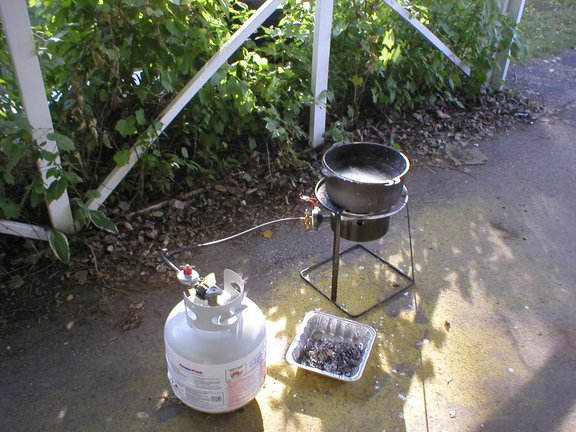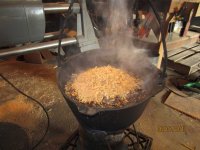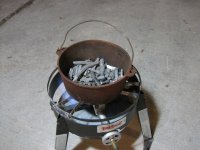So I got my hands on an old Dutch oven for when I finally get around to casting. It has some minor rust, so I'm going to clean it up and season it as I would any other cast iron.
If my venture into reloading is any indicator, I will spend the next year or so collecting piecemeal, so the seasoning is with more of an eye for storage. It will be kept out in the workshop with my gun cleaning/reloading stuff so there will be absolutely NO chance of someone confusing it for something that can be used for food use. I'm dim enough without chancing lead poisoning.
My question, finally, is when I get ready to smelt, is there anything special I need to do before using it? Will the seasoning (I use Crisco on my skillet) have a negative impact on the lead, or will fluxing remove any impurities that might result?
Obviously I am new to the concept. I have been reading some, but haven't seen this subject touched on.
One more question, when it comes time to get the burner, what is a good BTU rating? Seems like the high pressure burners are where it's at.
I thank you in advance for any and all info. It's going to be a bit, so there's no rush. Just curious.
If my venture into reloading is any indicator, I will spend the next year or so collecting piecemeal, so the seasoning is with more of an eye for storage. It will be kept out in the workshop with my gun cleaning/reloading stuff so there will be absolutely NO chance of someone confusing it for something that can be used for food use. I'm dim enough without chancing lead poisoning.
My question, finally, is when I get ready to smelt, is there anything special I need to do before using it? Will the seasoning (I use Crisco on my skillet) have a negative impact on the lead, or will fluxing remove any impurities that might result?
Obviously I am new to the concept. I have been reading some, but haven't seen this subject touched on.
One more question, when it comes time to get the burner, what is a good BTU rating? Seems like the high pressure burners are where it's at.
I thank you in advance for any and all info. It's going to be a bit, so there's no rush. Just curious.



